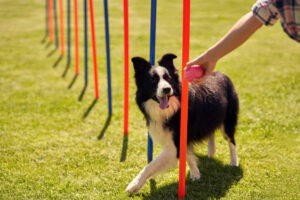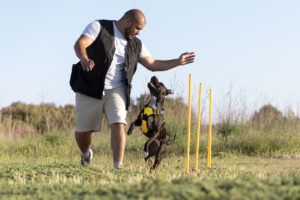As a new pet owner, one of the most important responsibilities you have is ensuring that your puppy is well-fed and healthy. But with so many different types of dog food and feeding schedules to choose from, it can be difficult to know where to start. That’s why we’ve put together this comprehensive puppy feeding guide to help you make informed decisions about your puppy’s diet.
Choose the right type of food
There are three main types of dog food: dry, wet, and raw. Dry food is the most popular and convenient option, as it is easy to store and has a long shelf life. Wet food is a good option for puppies who need extra hydration, but it can be expensive and spoil quickly. Raw food diets are becoming more popular, but they can be difficult to balance and carry a higher risk of bacterial contamination.
Read the label
When choosing a brand of dog food, make sure to read the label carefully. Look for a brand that uses high-quality ingredients, such as real meat and whole grains. Avoid brands that use fillers or by-products, as these can be harmful to your puppy’s health.
Feed your puppy according to their age and weight
Puppies have different nutritional needs than adult dogs, so it’s important to feed them a diet that is appropriate for their age and weight. Most puppy food labels will provide feeding guidelines based on your puppy’s weight and age. It’s also a good idea to consult with your veterinarian to make sure you are feeding your puppy the right amount.
Stick to a feeding schedule
Puppies thrive on routine, so it’s important to stick to a regular feeding schedule. Most puppies will need to be fed three to four times a day until they are six months old. After that, you can gradually reduce the number of feedings to two times a day.
Provide fresh water
Make sure your puppy always has access to fresh, clean water. You can use a water bowl or a water dispenser, but make sure to clean it regularly to prevent bacteria buildup.
Monitor your puppy’s weight
As your puppy grows, their nutritional needs will change. It’s important to monitor their weight and adjust their feeding accordingly. If your puppy is gaining weight too quickly, you may need to reduce their food intake. If they are not gaining weight or are losing weight, you may need to increase their food intake or switch to a higher calorie food.
Be aware of potential health issues
Some puppies may have health issues that require a specialized diet. For example, puppies with food allergies may need to avoid certain ingredients. It’s important to consult with your veterinarian if you notice any health issues or changes in your puppy’s behavior.
In conclusion, feeding your puppy a healthy and balanced diet is essential for their growth and development. By choosing the right type of food, reading the label, feeding your puppy according to their age and weight, sticking to a feeding schedule, providing fresh water, monitoring their weight, and being aware of potential health issues, you can ensure that your puppy is getting the nutrition they need to thrive. We hope this puppy feeding guide has been helpful for new pet owners.







